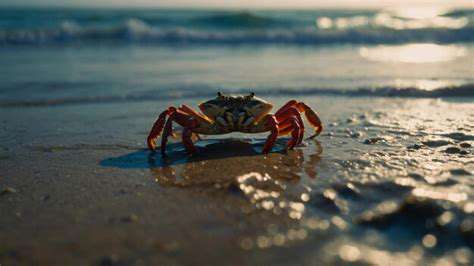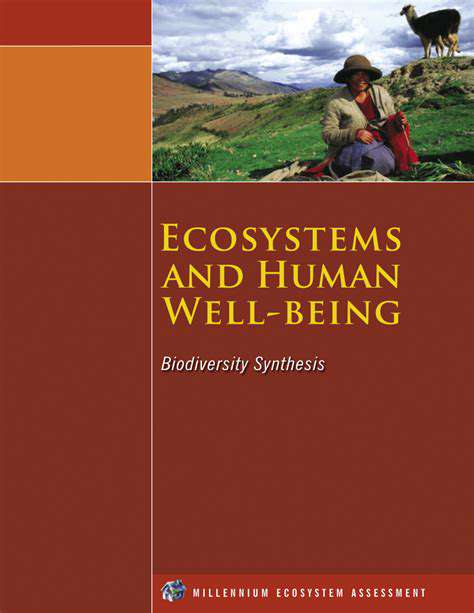Coastal Ecosystems: A Biodiversity Hotspot for Numerous Species
The Rich Diversity of Coastal Species

The Importance of Coastal Ecosystems
Coastal ecosystems, including mangroves, salt marshes, and coral reefs, are among the most productive environments on the planet. These regions serve as crucial habitats for a wide range of marine species as well as terrestrial organisms. Their rich biodiversity supports not only individual species but also entire food webs and fishing communities. Additionally, coastal ecosystems play a vital role in protecting shorelines from erosion and mitigating the impacts of climate change.
Moreover, these ecosystems are essential for providing various ecosystem services that human populations rely on. They supply resources such as fish, shellfish, and other marine products, which are vital for food security and economic livelihoods. Healthy coastal ecosystems also help in carbon sequestration, thus combating global warming.
Visiting coastal regions, people often engage in recreational activities such as fishing, snorkeling, and kayaking, which can foster a deeper appreciation for nature. By valuing and protecting these biodiversity hotspots, we can ensure the well-being of both wildlife and human communities. It is essential to raise awareness about the importance of sustaining these ecosystems for future generations.
In conclusion, coastal ecosystems represent a rich tapestry of life and are critical to our planet's health. Protecting them is not merely an environmental challenge but also a social and economic necessity.
Threats Facing Coastal Biodiversity
Despite their importance, coastal ecosystems are under threat from various human activities. Urban development, pollution, and climate change are the primary drivers of habitat degradation and loss. Coastal areas are often targets for development due to their scenic beauty and resources, which leads to significant habitat destruction.
One of the most significant threats is climate change, causing rising sea levels and increasing ocean temperatures. This phenomenon poses a risk to sensitive habitats like coral reefs, which are already being affected by coral bleaching. The loss of these ecosystems can have dire consequences for the species that depend on them. Furthermore, habitat fragmentation reduces the resilience of these ecosystems, making recovery from environmental stressors more challenging.
Pollution is another considerable threat to coastal biodiversity. Runoff from agricultural areas can introduce harmful chemicals and excess nutrients into these ecosystems, leading to algal blooms that deplete oxygen levels in the water. This degradation can result in dead zones where aquatic life cannot survive.
Efforts are being made to mitigate these threats through conservation initiatives and sustainable practices. By focusing on habitat restoration, pollution control, and climate action, we can protect these vital ecosystems and the myriad species that inhabit them. Engaging communities in conservation efforts is critical to fostering a sense of stewardship for coastal environments.
Importance of Coastal Ecosystems for Human Well-Being

Economic Benefits of Coastal Ecosystems
Coastal ecosystems, such as mangroves, coral reefs, and salt marshes, play a significant role in the economy of many coastal communities. These ecosystems provide vital resources that support fisheries, tourism, and recreational activities. For instance, healthy coral reefs sustain diverse fish populations, which are essential for local fisheries. Additionally, ecotourism, centered around these natural landscapes, helps create jobs and stimulate local economies.
In many regions, the income generated from fisheries is crucial for livelihoods, particularly in developing countries. Coastal areas often rely on small-scale fisheries, which can be more sustainable than large industrial operations. Thus, protecting these ecosystems is not only beneficial for biodiversity but also for economic stability.
Investing in the conservation of coastal ecosystems often yields a high return on investment. For example, the restoration of mangroves has been shown to significantly reduce the impact of storm surges, thereby protecting valuable infrastructure and reducing disaster recovery costs. These preventative measures can save communities millions in damages during extreme weather events.
Overall, the economic importance of coastal ecosystems should not be underestimated, as they contribute immensely to the prosperity and well-being of coastal populations through sustainable practices and natural resource management.
Ecological Significance of Coastal Ecosystems
Coastal ecosystems serve as critical habitats for numerous species, including migratory birds, marine mammals, and various fish species. They provide essential nursery grounds for juvenile fish, which rely on these protected areas to grow and thrive before venturing into deeper waters. This ecological function is crucial for maintaining healthy fish populations and biodiversity.
Furthermore, coastal ecosystems perform vital ecological processes, acting as natural filters that remove pollutants from water. They can also sequester carbon, helping mitigate climate change impacts. This ability to absorb carbon dioxide makes coastal habitats not only essential for local wildlife but also a key player in global climate regulation.
Moreover, these ecosystems contribute to maintaining coastal resilience against erosion and flooding. The root systems of mangroves and salt marshes help stabilize shorelines, protecting inland areas from the impacts of sea-level rise and extreme weather. In this way, they act as a natural barrier, reducing the risk to human settlements along the coast.
Thus, the ecological significance of coastal ecosystems cannot be overstated, as they provide critical services that support both wildlife and human communities alike.
Conservation Challenges and Opportunities
Despite their importance, coastal ecosystems face numerous threats, including climate change, pollution, and urban development. Human activities often lead to habitat degradation, significantly impacting biodiversity and ecosystem services. Thus, proactive conservation measures are essential to mitigate these threats.
One of the major challenges in coastal ecosystem conservation is balancing development and environmental preservation. The increasing demand for coastal real estate can lead to the destruction of vital habitats. Educating communities and policymakers about the long-term benefits of preserving these ecosystems is crucial for making more sustainable decisions.
Innovative solutions are emerging to address these challenges, including the establishment of marine protected areas (MPAs). MPAs can safeguard essential habitats from harmful activities, enabling ecosystems to recover and maintain their biodiversity. Through effective management and enforcement, MPAs have the potential to revitalize fish populations and enhance overall ecosystem health.
In conclusion, while coastal ecosystems face significant challenges, they also present unique opportunities for conservation and sustainable development. Collaborations between governments, NGOs, and local communities are essential for creating a balanced approach that promotes both ecological integrity and human well-being.